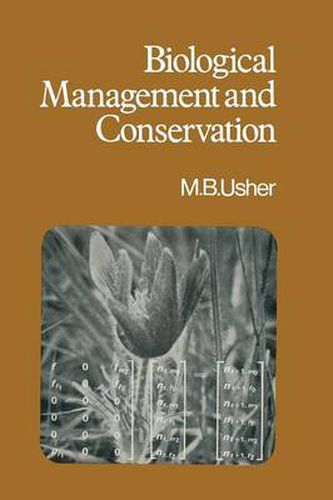Readings Newsletter
Become a Readings Member to make your shopping experience even easier.
Sign in or sign up for free!
You’re not far away from qualifying for FREE standard shipping within Australia
You’ve qualified for FREE standard shipping within Australia
The cart is loading…






This title is printed to order. This book may have been self-published. If so, we cannot guarantee the quality of the content. In the main most books will have gone through the editing process however some may not. We therefore suggest that you be aware of this before ordering this book. If in doubt check either the author or publisher’s details as we are unable to accept any returns unless they are faulty. Please contact us if you have any questions.
Whilst I have been writing this book two developments have been occur ring which have influenced ecological thinking, and which undoubtedly will have a great impact on ecologists in the future. One of these developments concerns the relation between the ecologist and the public. On the public’s side there has been an increasing aware ness of ecological processes, and more emphasis on subjects such as the environment and pollution in newspapers and magazines. Maybe it was European Conservation Year 1970 (ECY 1970) that succeeded in stimu lating this interest. On the ecologist’s side there has been a search for the relevance of his research in the world of today. The concern for relevance has been clearly reflected in the ‘Comments’ that have been written for the first few parts of the British Ecological Society’s members’ bulletin. The word ‘conservation’ has been widely used in the context of this relation between the public and the ecologist; indeed it might well be said that the word has been over-used, being applied to any form of protectionist operation. The second of the developments concerns the quantification of eco logical processes. Statistical analysis of experimental data has been applied for several decades, but the recent general availability of com puters has meant that mathematical analysis and computer modelling are tools that the ecologist can now use.
$9.00 standard shipping within Australia
FREE standard shipping within Australia for orders over $100.00
Express & International shipping calculated at checkout
Stock availability can be subject to change without notice. We recommend calling the shop or contacting our online team to check availability of low stock items. Please see our Shopping Online page for more details.
This title is printed to order. This book may have been self-published. If so, we cannot guarantee the quality of the content. In the main most books will have gone through the editing process however some may not. We therefore suggest that you be aware of this before ordering this book. If in doubt check either the author or publisher’s details as we are unable to accept any returns unless they are faulty. Please contact us if you have any questions.
Whilst I have been writing this book two developments have been occur ring which have influenced ecological thinking, and which undoubtedly will have a great impact on ecologists in the future. One of these developments concerns the relation between the ecologist and the public. On the public’s side there has been an increasing aware ness of ecological processes, and more emphasis on subjects such as the environment and pollution in newspapers and magazines. Maybe it was European Conservation Year 1970 (ECY 1970) that succeeded in stimu lating this interest. On the ecologist’s side there has been a search for the relevance of his research in the world of today. The concern for relevance has been clearly reflected in the ‘Comments’ that have been written for the first few parts of the British Ecological Society’s members’ bulletin. The word ‘conservation’ has been widely used in the context of this relation between the public and the ecologist; indeed it might well be said that the word has been over-used, being applied to any form of protectionist operation. The second of the developments concerns the quantification of eco logical processes. Statistical analysis of experimental data has been applied for several decades, but the recent general availability of com puters has meant that mathematical analysis and computer modelling are tools that the ecologist can now use.